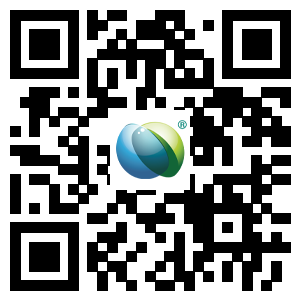Understanding the Role of Geodynamic Equipment in Earthquake Research
May 10,2025
Understanding the Role of Geodynamic Equipment in Earthquake Research
Earthquakes remain one of the most destructive natural phenomena, capable of causing significant loss of life and property. To mitigate these effects and enhance our understanding of seismic activities, researchers increasingly rely on geodynamic equipment. This article aims to provide an in-depth exploration of the vital role geodynamic instruments play in earthquake research, focusing on their applications, technologies, and implications for future studies.
Table of Contents
- What is Geodynamic Equipment?
- The Importance of Geodynamic Instruments in Seismology
- Types of Geodynamic Equipment Used in Earthquake Research
- Data Collection and Analysis in Earthquake Research
- Impact of Geodynamic Equipment on Earthquake Prediction
- Case Studies: Successful Applications of Geodynamic Instruments
- The Future of Geodynamic Research and Equipment
- Frequently Asked Questions
What is Geodynamic Equipment?
Geodynamic equipment encompasses a variety of instruments and technologies utilized to study the dynamics of the Earth’s crust. These tools help scientists monitor seismic activity, analyze tectonic movements, and gather critical data that can inform better safety protocols. With advancements in technology, geodynamic equipment has evolved significantly, allowing for more precise measurements and comprehensive analyses of geological phenomena.
The Importance of Geodynamic Instruments in Seismology
The significance of geodynamic equipment in seismology cannot be overstated. These instruments provide crucial data that not only enhance our understanding of earthquakes but also play a vital role in disaster preparedness and response. By accurately measuring ground movement and stress, researchers can identify potential hazards and develop mitigation strategies, thereby saving lives and protecting infrastructure.
Types of Geodynamic Equipment Used in Earthquake Research
Understanding the various types of geodynamic equipment is essential for grasping their applications in earthquake research. Below are some of the most commonly used instruments:
Seismographs
Seismographs are fundamental tools in earthquake research, designed to detect and record seismic waves. These instruments consist of a mass suspended on a spring, which moves in response to ground motion. By measuring the movement of the mass relative to the ground, seismographs produce a seismogram that represents the intensity and duration of an earthquake. Modern digital seismographs offer enhanced sensitivity and real-time data transmission, allowing for immediate analysis and response.
GPS Systems
Global Positioning System (GPS) technology has revolutionized the field of geodynamics. High-precision GPS systems enable researchers to monitor tectonic plate movements with remarkable accuracy. By placing GPS receivers at various locations, scientists can track minute shifts in the Earth’s crust, which are crucial for understanding long-term tectonic processes and assessing earthquake risks.
Accelerometers
Accelerometers measure the acceleration of ground motion during seismic events. These devices are vital for understanding the dynamics of earthquakes, as they provide data on how fast the ground accelerates during shaking. This information is crucial for engineers and architects when designing earthquake-resistant structures.
Strain Gauges
Strain gauges are used to measure the deformation of geological materials under stress. By embedding these devices in rocks or soil, researchers can monitor changes in strain that may indicate impending seismic activity. This information is pivotal in understanding the strain accumulation along fault lines, providing insight into potential earthquake occurrences.
Data Collection and Analysis in Earthquake Research
The effectiveness of geodynamic equipment lies not only in the instruments themselves but also in the data collection and analysis processes. Data gathered from seismographs, GPS, accelerometers, and strain gauges undergoes rigorous analysis to extract meaningful insights. Advanced computational methods and software facilitate the interpretation of complex data sets, allowing researchers to identify patterns and correlations that may suggest seismic risks.
Moreover, the integration of machine learning algorithms is becoming increasingly important in analyzing seismic data. These technologies help in recognizing subtle patterns that human analysts may overlook, thus improving the accuracy of earthquake prediction models.
Impact of Geodynamic Equipment on Earthquake Prediction
The quest for accurate earthquake prediction has long been a challenge in seismology. Geodynamic equipment plays a crucial role in enhancing our predictive capabilities. By continuously monitoring geological activity and analyzing historical data, researchers can identify trends and potential precursors to seismic events.
While predicting the exact timing and magnitude of an earthquake remains elusive, advancements in geodynamic technology have improved our ability to assess risks and implement early warning systems. These systems can alert populations in advance of significant seismic events, providing critical time for evacuation and preparedness.
Case Studies: Successful Applications of Geodynamic Instruments
Numerous case studies highlight the successful application of geodynamic instruments in earthquake research. One notable example is the 2011 Tōhoku earthquake in Japan. Following this catastrophic event, researchers utilized data from an extensive network of seismographs and GPS stations to analyze the earthquake's impact and understand the mechanisms behind it. The insights gained contributed to improvements in building codes and disaster preparedness measures in the region.
Another significant case study involves the San Andreas Fault in California. Continuous monitoring through GPS and strain gauges has allowed scientists to gather invaluable data on the fault's behavior. This research has been instrumental in identifying areas of increased seismic risk and informing public safety initiatives.
The Future of Geodynamic Research and Equipment
The future of geodynamic research is poised for exciting developments, driven by advancements in technology and data analysis methodologies. The integration of artificial intelligence, data fusion techniques, and improved sensor technologies will enable more accurate monitoring and analysis of seismic activities.
Furthermore, the global collaboration among researchers and institutions will enhance data sharing and collective knowledge, leading to more comprehensive earthquake research. As we continue to push the boundaries of geodynamic studies, the potential for innovation in earthquake prediction and disaster management becomes increasingly promising.
Frequently Asked Questions
1. What types of geodynamic equipment are most effective for earthquake research?
Seismographs, GPS systems, accelerometers, and strain gauges are among the most effective types of geodynamic equipment used in earthquake research, each providing unique data that enhances our understanding of seismic activity.
2. How does GPS technology contribute to earthquake prediction?
GPS technology helps monitor tectonic plate movements with high precision, allowing researchers to analyze long-term trends and assess potential earthquake risks based on shifts in the Earth's crust.
3. Can geodynamic instruments predict earthquakes accurately?
While geodynamic instruments significantly improve our understanding of seismic risks, accurately predicting the exact timing and magnitude of an earthquake remains a challenge. However, they help inform early warning systems and disaster preparedness strategies.
4. What role do machine learning algorithms play in earthquake research?
Machine learning algorithms assist in analyzing complex seismic data, identifying patterns, and improving predictive models, which enhances the accuracy of earthquake assessments.
5. How has technology improved earthquake monitoring over the years?
Advancements in digital seismographs, high-precision GPS systems, and data analysis software have significantly improved the accuracy, speed, and reliability of earthquake monitoring, enabling researchers to gather more detailed insights into seismic phenomena.
Conclusion
Geodynamic equipment plays a vital role in earthquake research, enabling scientists to monitor seismic activity, analyze tectonic movements, and develop better safety measures. As technology continues to advance, the potential for improved earthquake prediction and disaster preparedness becomes increasingly attainable. By understanding the intricacies of geodynamic instruments and their applications, we can better navigate the challenges posed by earthquakes, ultimately aiming to reduce their devastating impacts on society.
BLOG
CONTACT
Tel: 0086-0551-65327898 / 65327899
Fax: 0086-0551-65327899
E-mail: hfgwe@hfgwe.com
Add: 9th Floor, Building A, G3, Phase II, Innovation Industry Park,No. 2800 Innovation Avenue, High-tech Zone, Hefei city,Anhui Province, China

Mobile website
Hefei Guowei Electronics Co., Ltd.
Subscribe Us
We will contact you within one working day. Please pay attention to your email.
CopyRight:Hefei Guowei Electronics Co., Ltd. Powered by 300.cn SEO






